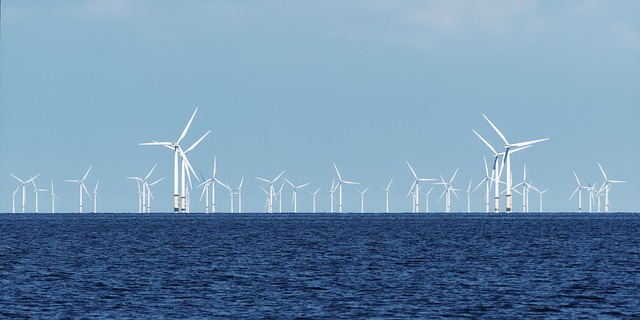As a consortium partner, MRAG provided an overview of the effects of offshore wind farms on fisheries and aquaculture. The study was funded by EU under the EASME/EMFF/2018/011 Framework Contract for The Studies Providing Scientific Advice in Support of The Common Fisheries Policy in EU Waters, Excluding the Mediterranean and Black Sea. LOT 1: Scientific Advice in Support of The CFP in the Baltic Sea and North Sea EU Waters.
The global shift to renewable energy is underway, including large-scale development of offshore wind farms. This expansion in marine renewable energy will inevitably lead to an increased co-existence, and the potential for multi-use of the space available for fishing and aquaculture activities, or restriction and potential conflict with some fishing activities and methods. With this rapid rise, it is important to be aware of the evidence that has already been gathered through research projects, studies and assessments on the impacts of offshore wind installations on fishing and/or aquaculture activities.
The aim of the study was to deliver a critical, state of the art overview of the effects of wind farms on fisheries and aquaculture, covering the North and Baltic Seas. A desk study approach was used to draw on the results of existing studies, projects, expert views and experiences and other materials with a view to identify the effects of wind farms on fishing and aquaculture. The research was complemented with key stakeholder interviews and specific case studies, the information gathered was used to identify research gaps and make recommendations for future studies.;
MRAG led on key tasks including: Task 1.3: Providing an overview of the current EU and MS rules/legislation relating to fisheries and aquaculture activities around offshore wind farms. Task 1.5: Identifying the roles different fisheries/aquaculture-relevant stakeholders play including their position (administration, fishers, industry, NGOs etc.) in the planning, implementation and operation of wind farms. Task 2: Consulting directly with key stakeholders to supplement the literature on ecology, management, legislation and socio- economics to further understand the current and potential future effects of offshore wind farms on fisheries and aquaculture.
The right of Member States to regulate fisheries and aquaculture activities in and around OWFs derives from the United Nations Convention on the Law of the Sea (UNCLOS), which confers upon them a right to claim a 12 nm territorial sea (full sovereignty) and a 200 nm Exclusive Economic Zone (sovereign rights). Consequently, each Member State is free to adopt its own specific legislation on safety zones around OWFs. There is no common approach to legislation on safety around OWFs. In some Member States, the legislation provides for the creation of 500 m safety zones around OWFs in which all navigation is prohibited. Elsewhere the legislation permits navigation through OWFs but prohibits fishing either altogether or using active gear. In some Member States, safety zones are applied only during construction, maintenance and removal.
The major socio-economic effects for fisheries are the loss of fishing grounds (economic value, but also emotional value), leading to effects on catch volume, gear conflicts (e.g. bottom trawl gears cannot operated within OWFs, restrictions in anchoring passive fishing equipment [Pots, nets] within OWFs) and changes in travel time from harbour to fishing grounds. Fishers tend to compensate for these through fisheries displacement (moving to other areas or fishing around the OWF edge) and switching to other gear types (e.g. mobile gear to crab or lobster potting). Nevertheless, this is associated with several issues, e.g. increased competition, safety implications (e.g. collision, cable damage), reduced flexibility and economic viability. It should be noted that there is no study that has provided complete quantitative data on the economic effects, especially those covering the full value chain (fishing, processing, transport, marketing). Therefore, positive or negative claims about the eventual socio-economic effects were not validated in this study.
Stakeholders provided different views (often polarized by sector and areas) on the issues under study. These were largely dependent on the background of the stakeholder and their direct interactions with OWFs and collaborative opportunities with other stakeholders. Best practices in stakeholder governance were identified as early engagement in discussions and planning of OWFs, alongside support for active enforcement of multi-use in future marine spatial planning.
There is no general approach on management strategies for fishery and aquaculture in OWFs, as it is all regulated case-by-case. The OWF development process is part of the obligatory maritime spatial planning (MSP) process for EU member states. The literature review and interviews conducted here show that the concerns of the fishery sector are in most cases not taken forward in designing the OWFs areas. Some OWFs have set up compensation mechanisms for displaced fisheries; others have not. There are several hurdles that make co-location with fisheries difficult, such as safety risks (collision, cable damage) or the distance between turbines (to be larger to allow fishing operations). Therefore, the MSP management process needs to take into account these challenges to ensure co-existence between fisheries and OWFs. Consultation (from early stage and on continuous basis) can be regarded as a mitigation strategy to achieve this. For offshore aquaculture, which has a clear co-location potential, too few experimental studies testing its technical and economic feasibility are conducted and the lack of clear licensing procedures and regulations are inhibiting the development of offshore aquaculture in OWFs.

